A colossal pigeon will soon perch above the High Line
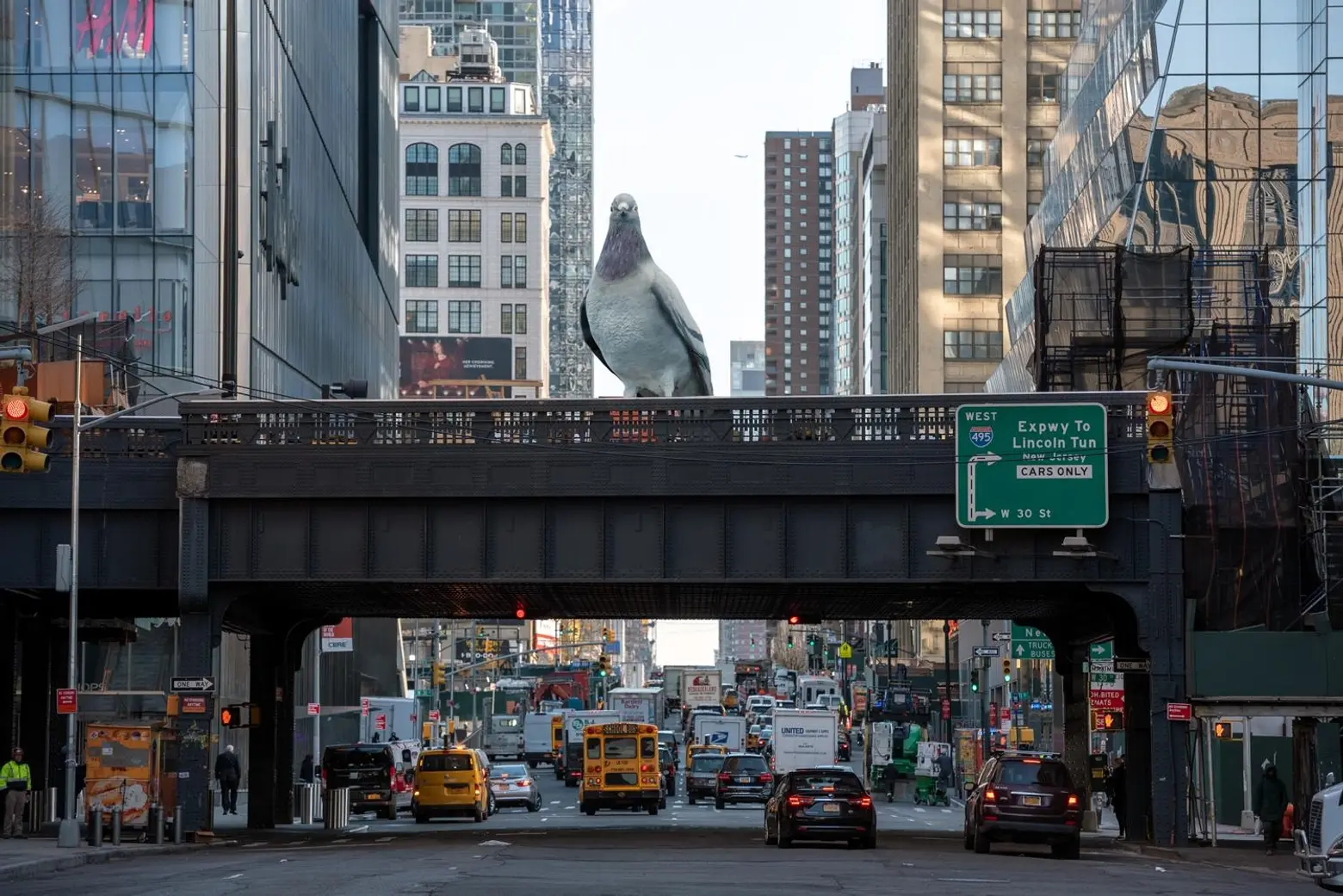
Iván Argote, “Dinosaur,” 2024 (rendering). A High Line Plinth commission. On view October 2024— Spring 2026. Images courtesy of the artist and the High Line.
A giant pigeon sculpture will soon tower over 10th Avenue from its perch on the High Line. The High Line on Wednesday revealed its selection of artist Iván Argote’s “Dinosaur,” a 16-foot-tall, hyper-realistic sculpture of a pigeon cast in aluminum, as its next High Line Plinth commission. The monumental bird will be installed above the intersection of 10th Avenue and 30th Street this October and remain on view for 18 months.
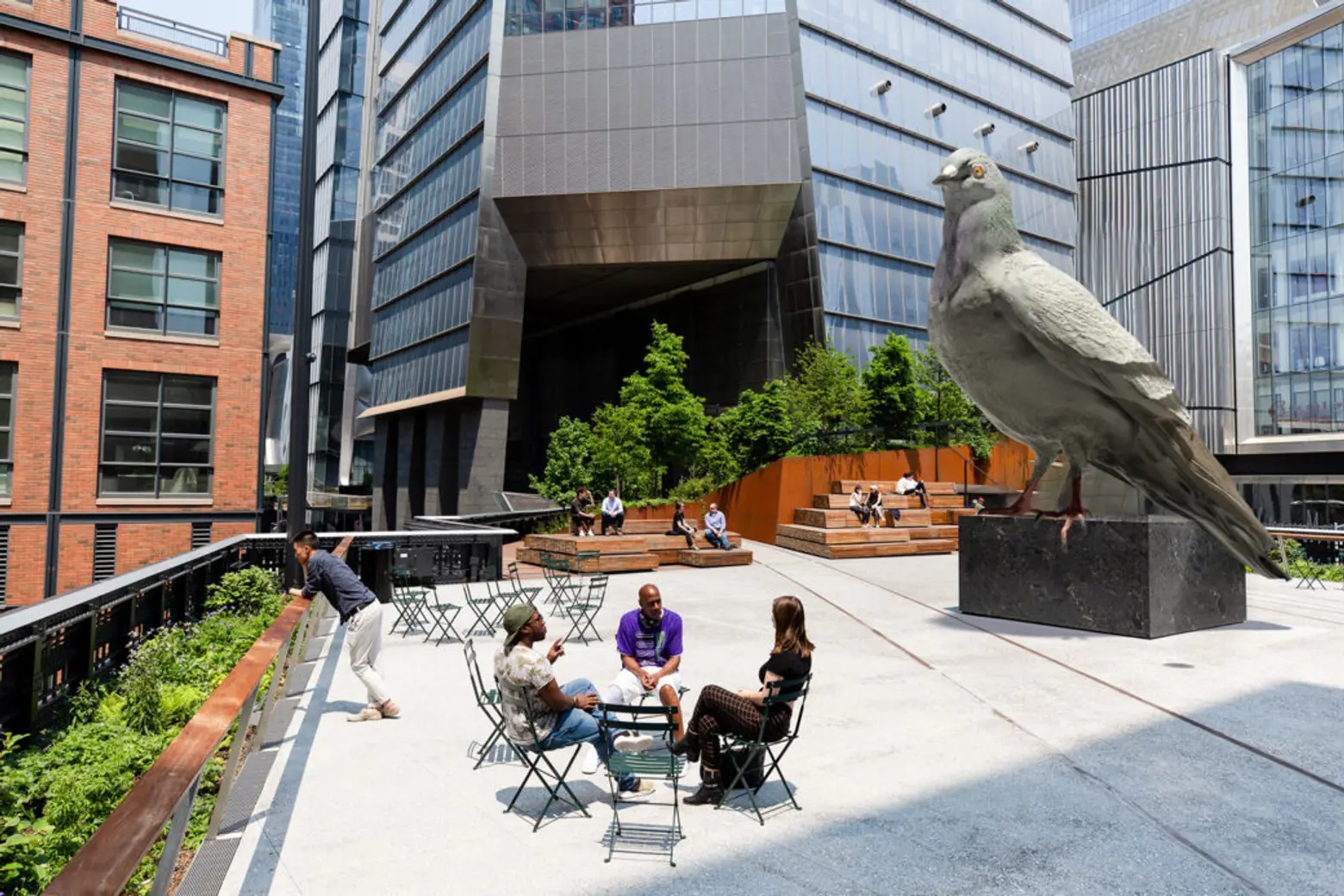
The 16-foot-tall pigeon sculpture will sit atop a 5-foot concrete plinth, creating a striking 21-foot-tall installation. The plinth is designed to mimic the sidewalks and buildings that pigeons typically call home, and flips the usual power dynamic between humans and birds by elevating the pigeon above the car-filled streets and High Line visitors.
The striking, hand-painted sculpture pokes fun at the grandeur of traditional monuments that commemorate historical figures that often lack the honor deserving of being recognized, instead choosing to pay tribute to a common yet iconic member of New York City’s wildlife.
“Dinosaur” and the feathered aviator it depicts pay tribute to the city’s evolution, forcing viewers to confront human’s constantly evolving relationship with the natural world amidst the dense, urban landscape.
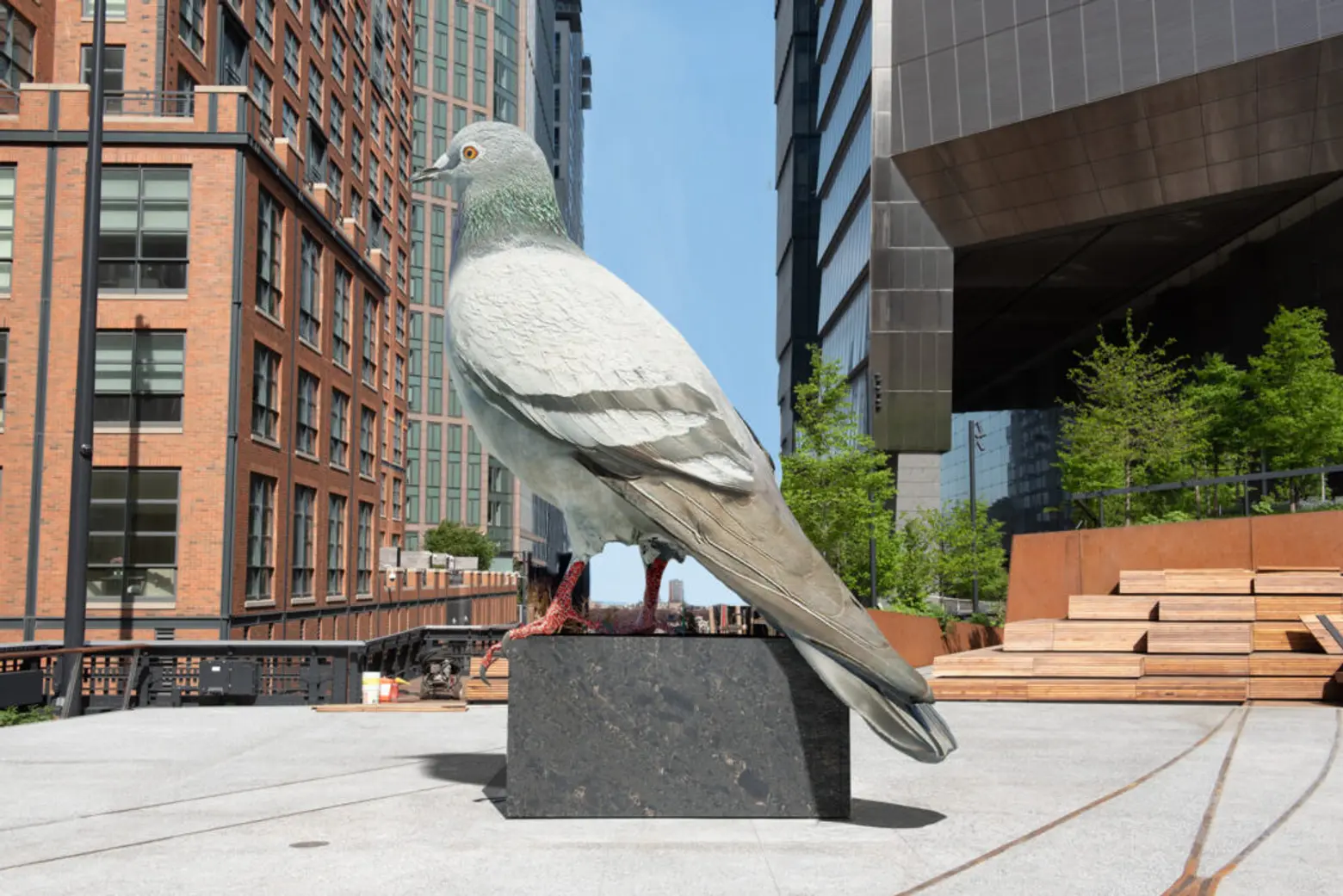
Pigeons first arrived in the United States in the 1800s. The birds were kept as pets, used for food, and presented as symbols of beauty and wealth, a contrast to how they’re perceived now. Pigeons were also used as message carriers, highly valued for their homing skills, an internal navigational mechanism that allows them to find their way back home.
This natural ability made the bird a valuable tool in World War I and II by quickly relaying messages to the trenches and front lines. Before the introduction of technology rendered them obsolete, these birds received prestigious awards and were considered war heroes.
“The name Dinosaur makes reference to the sculpture’s scale and to the pigeon’s ancestors who millions of years ago dominated the globe, as we humans do today,” Argote said.
“The name also serves as reference to the dinosaur’s extinction. Like them, one day we won’t be around anymore, but perhaps a remnant of humanity will live on — as pigeons do — in the dark corners and gaps of future worlds. I feel this sculpture could generate an uncanny feeling of attraction, seduction, and fear among the inhabitants of New York.”
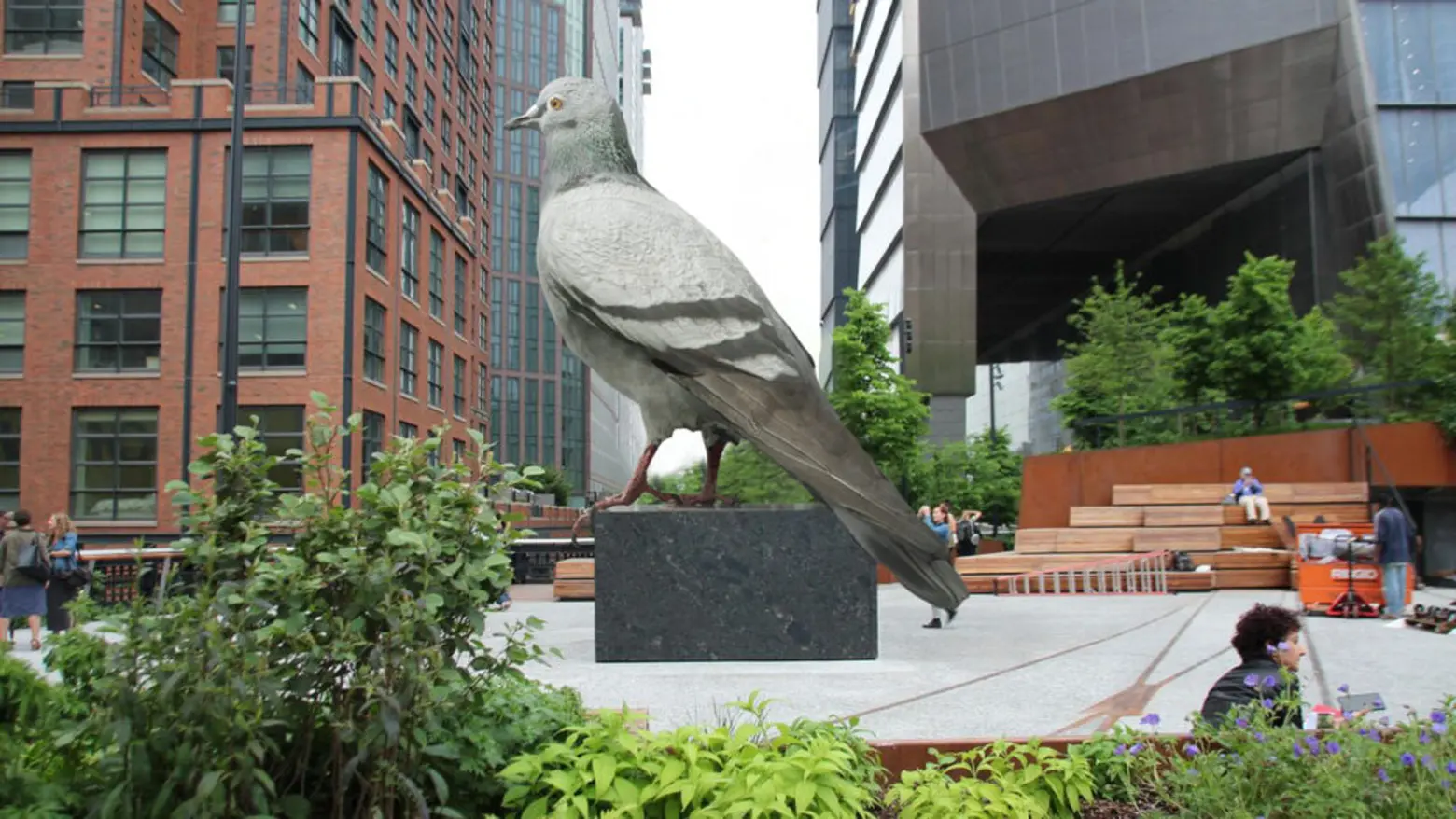
“Dinosaur” is the fourth commission for the Plinth program, an ongoing public art program hosted at the High Line. Previous installations include Simone Leigh’s “Brick House” in 2019, Sam Durant’s “Untitled (drone)” in 2021, and Pamela Rosenkranz’s “Old Tree” in 2023.
The High Line Plinth is located at the Spur, a dedicated area for rotating contemporary art commissions. Opened to the public in June 2019, the Spur is the final segment of the original elevated rail converted into public space. It stretches east along West 30th Street and concludes above 10th Avenue.
“Dinosaur” was first submitted to Plinth in 2020. During the public comment period, the piece received a wide range of responses from New Yorkers, who expressed both affection and disgust for the large bird, a symbol that is often synonymous with the five boroughs.
“Iván Argote’s monumental pigeon on the High Line Plinth demonstrates the power of art as storyteller and equalizer, giving New Yorkers and visitors alike unexpected insights and a common language of joy,” Alan van Capelle, executive director of Friends of the High Line, said.
“The connections and conversations across cultures, affiliations, and backgrounds that public art inspires are among the High Line’s most important offerings.”
Argote is the first Plinth artist from the global south, and the program’s youngest artist yet. His work in art and film is heavily inspired by social justice issues and historical processes. Many of his creations are influenced by his childhood in Bogotá, where he grew up in a family with a long-running tradition of political and social activism.
RELATED:
Get Insider Updates with Our Newsletter!
Leave a reply
Your email address will not be published.




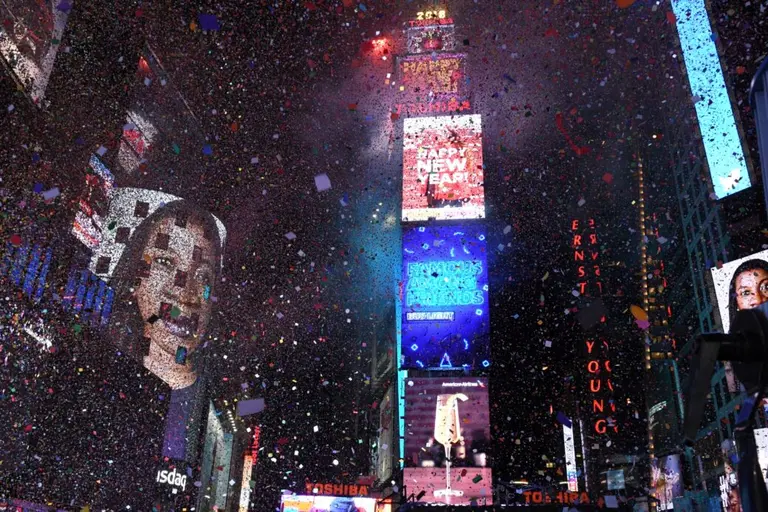
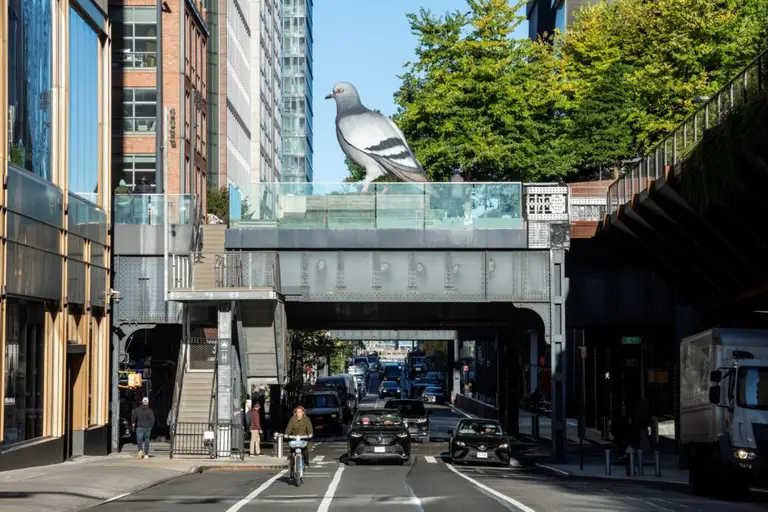

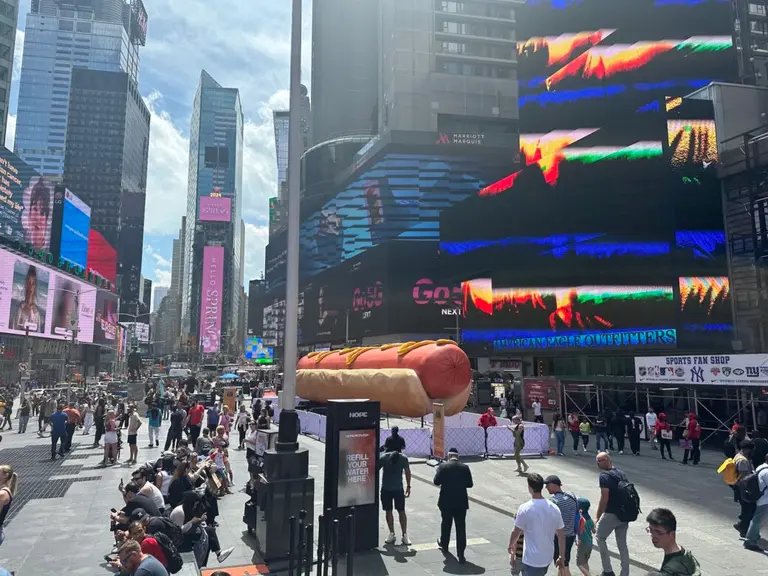
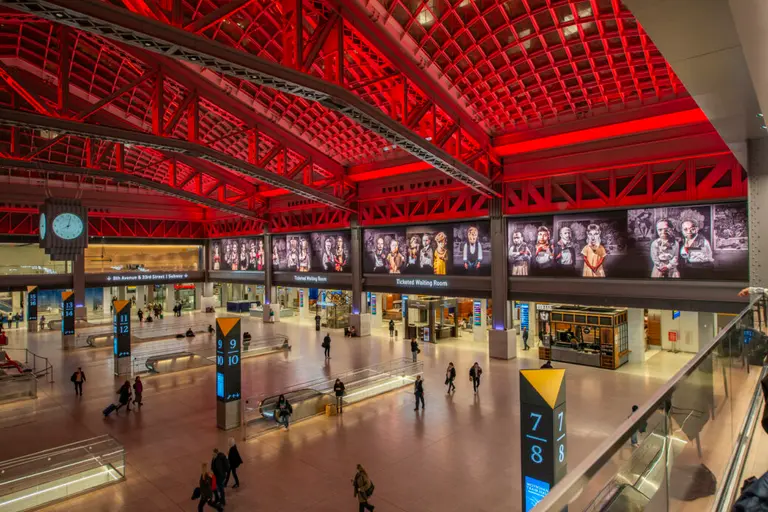
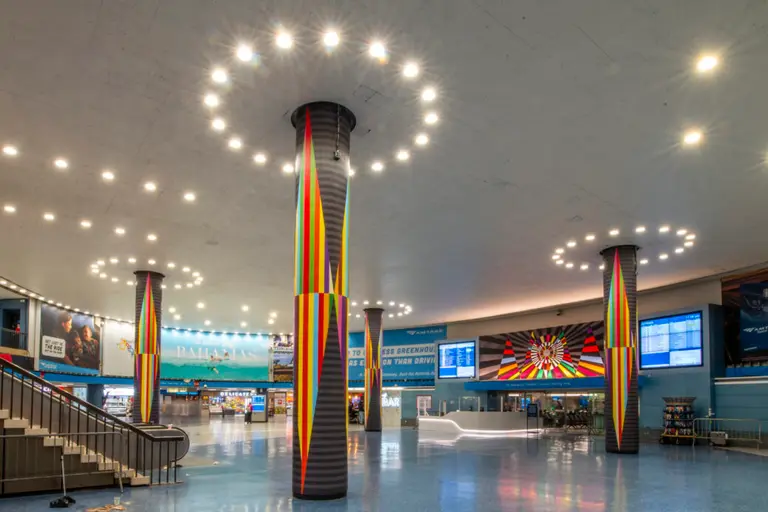





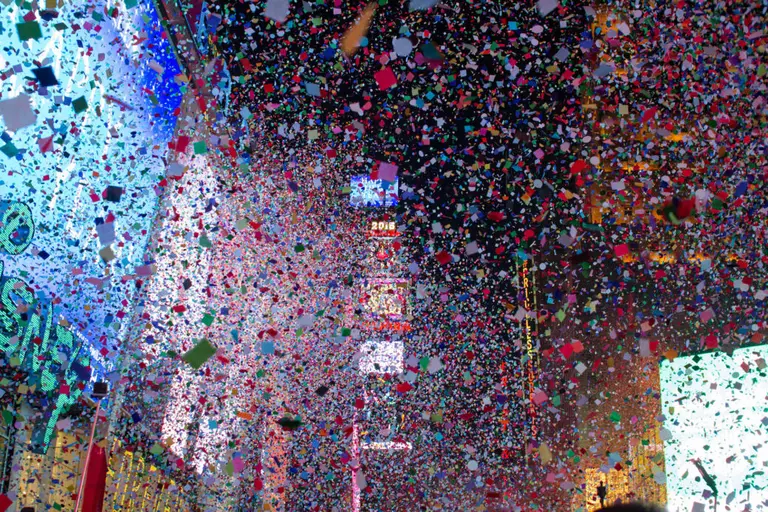

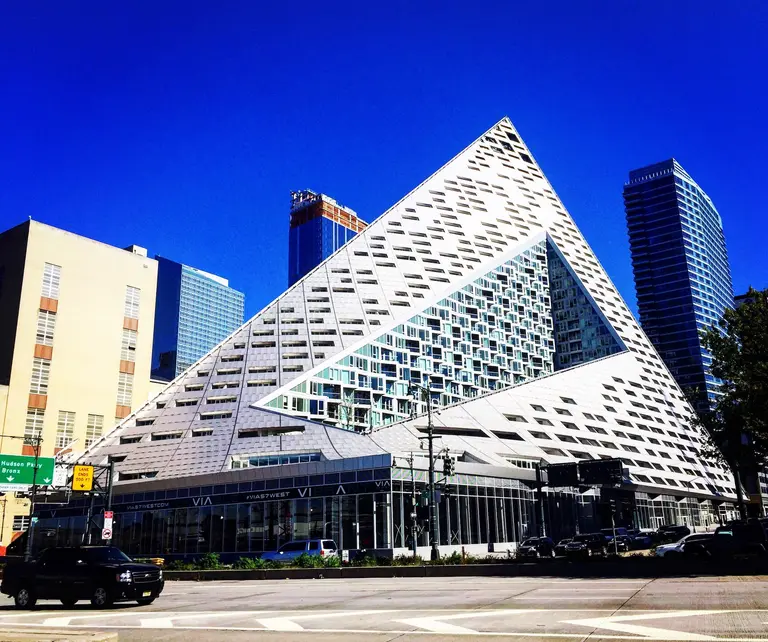
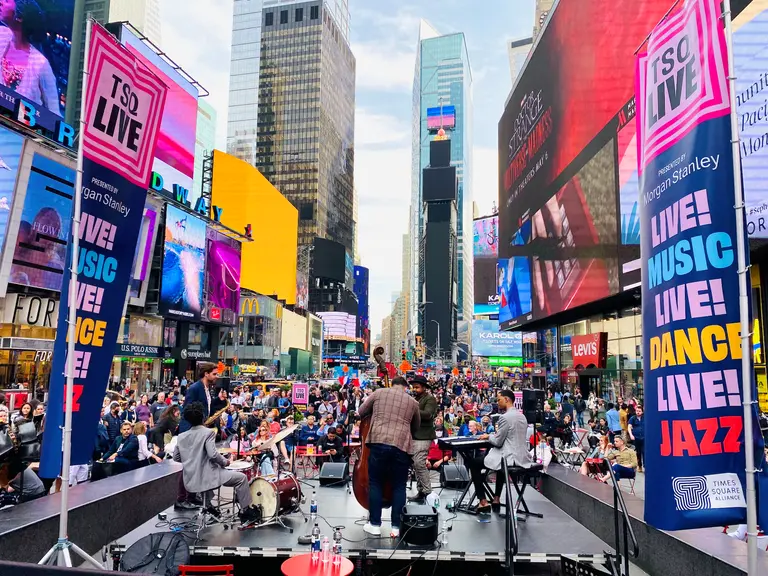
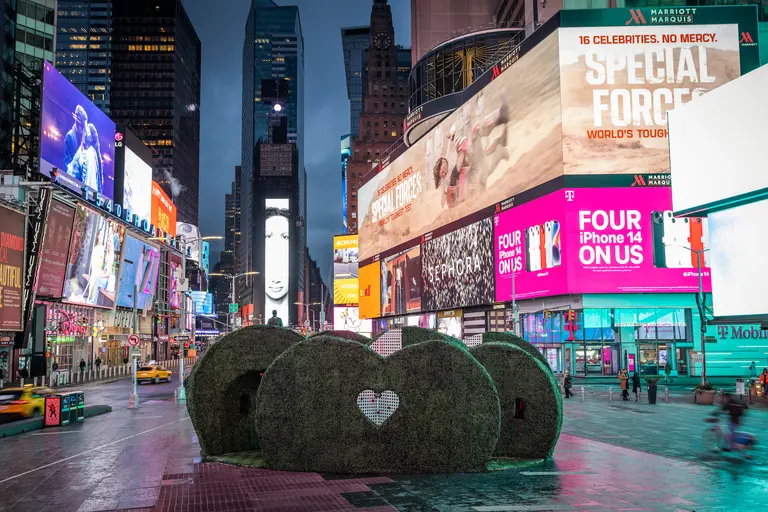
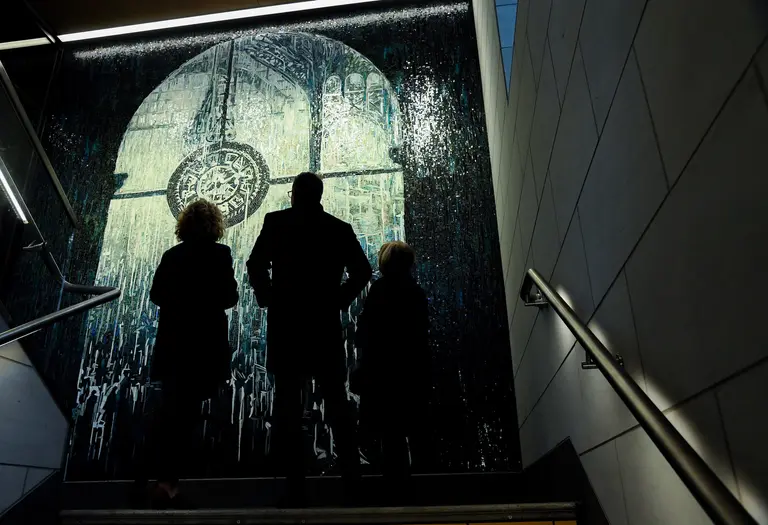












Nothing will be able to replace the OLD TREE. Especially not a pigeon. Couldn’t we buy the OLD TREE from the artist and have it on permanent display?